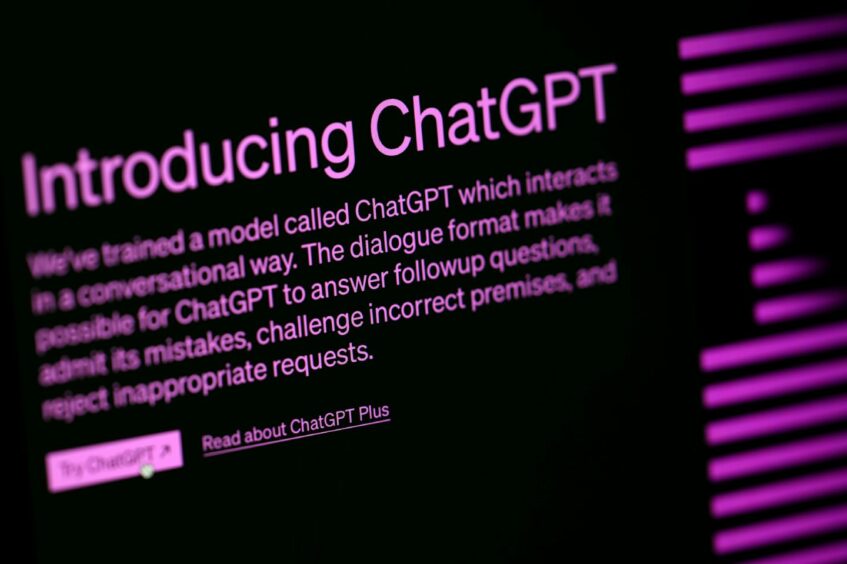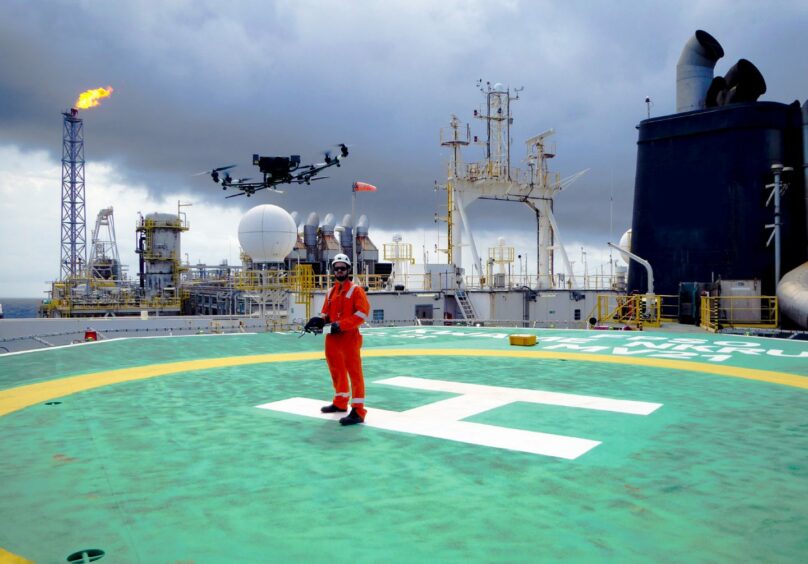
Having canvassed the UK energy sector, DNV finds it open to the potential of new AI-powered technologies – albeit with some barriers to overcome.
The past two years have seen an explosion in interest and investment into so-called artificial intelligence (AI) applications, turbocharged by the breakthrough success of systems such as OpenAI’s ChatGPT.
While machine learning and automation have been commonplace for decades, the accessibility and application of this new breed of services – particularly generative large language models (LLMs)- has punched through into the wider public consciousness.
In doing so, they have sparked both innovation and more than their fair share of controversy. The energy sector, it seems, is not immune to this.
“AI is here, it’s in the industry – but it’s definitely at the beginning for the industry,” explains DNV digital consultant Finlay Brierton.
Based on interviews from across the sector, the global advisory group’s report “AI Insights: Rising to the Challenge Across the UK Energy System” attempts to assess attitudes, adoption and concerns around the technology, finding a mixture of intrigue, optimism and a healthy dose of caution.
Yet the possibilities are clear too. “The energy system is changing. It’s becoming more complex, more diverse, more distributed, more variable as well with more renewables coming in. AI provides an opportunity to help develop the industry and the energy system for the future…and to help optimise what we’re doing now,” he adds.
No I in AI?
Actually defining AI poses the first hurdle; the term tends to be used interchangeably in reference to a variety of processes that span simple pattern recognition to apocalyptic “Terminator”-style scenarios.
Graeme Booth, head of digital technology at the Net Zero Technology Centre (NZTC), suggests it may be best understood as “augmented intelligence” – using digital tools to “automate and assist” problem-solving and creative tasks rather than replacing them.
“The proliferation of generative AI is augmenting our creativity and with that comes fictional content which, quite often, needs a human touch to refine,” he told DNV researchers.
Another concern lies in managing both the hype and hesitation surrounding AI and focusing on the real-world benefits. As Mr Brierton made clear: “There’s no point implementing AI for the sake of implementing AI. The best opportunities have direct impacts on the performance of the business.”
So what kind of impacts can it bring?
One interviewee, Faculty’s Andrew Perry, told DNV’s authors that generative technologies offered three main benefits for optimisation, in the form of cost savings, quality of output and speed.
DNV’s report also collates more specific initiatives that are already in place. Mr Booth of the NZTC points to two schemes around data sharing on decarbonisation – one being a data repository of subsea images that could be used to help train AI models to help with automated inspections.
Another, known as the Data for Net Zero (D4NZ) project, is aimed at helping develop the world’s first ‘Smart Energy Basin demonstrator’ in the North Sea – a project that would combine digital models of offshore assets and real-world data to help operators plan future scenarios.
Perceptual Robotics has developed an automated process for wind turbine inspection. This uses drones to photograph the turbines and AI models to analyse the images and identify those requiring maintenance.
In other disciplines, the technology is already in use by companies like Geoteric to better understand the incredibly complex array of data from seismic surveys.
Looking at a wider scale, Continuum Industries has developed Optioneer, an AI-powered network and linear infrastructure development platform. The platform helps energy companies to better assess routing options for power lines, cables and pipelines for hydrogen, water, and CO2.
Andrew Perry addressed more general applications in his interview: “A lot of the problems that AI can solve in energy require structured data and the outputs need to be very precise, such as in forecasting or anomaly detection in assets.
“This is where we now see a lot of activity and AI applications starting to move into business as usual. LLMs are better suited to problems using unstructured data such as natural language and where precision is less important. This is less relevant for challenges related to critical infrastructure but still has very useful applications in areas related to customer service and workforce optimization.”
Trust gap
Yet you don’t have to look far to find examples of poor applications too, though – instances in which systems like ChatGPT invent spurious data or bogus claims that are later used in professional settings.
Brierton points to two main things to bear in mind to prevent this. “First of all, keep AI applications to specific tasks. The more general the application, they create the scope for less quality output,” he suggests.
“Another point would be keeping humans in the loop for the foreseeable future. These systems are not going to be fully automated and we’re not ready for that just now.”
This however aptly highlights one of the largest barriers to greater adoption of these technologies – access to quality data.
“The problems we see in energy are complex and they typically revolve around structured data that require highly accurate and precise solutions,” he continued. “So a black box output that [produces] garbage is really not great.
“It’s a massive barrier, and it comes under the main barrier that we saw, which was data, whether that’s data quality, organisation level or data-sharing at the sector level.”
It also harks to a greater problem highlighted by DNV’s interviews, with AI still far from overcoming a gap in trustworthiness that would drive greater and more widespread adoption.
Gabriel Griffin-Booth of transmission operator National Gas told interviewers:“If it’s not explainable you’re going to have a big problem.
“If a decision maker is used to being able to make a judgement based on data inputs they’ve seen, and you try to replace that with a black box system where they just see an output number, there’s going to be a big problem with them trusting that.
“It needs to explain why it’s come up with the answers. That would be the largest adoption blocker I’ve seen in the time I’ve been trying to deliver AI, or machine learning, in the energy industry.”
Those concerns are magnified when it comes to areas like critical infrastructure -think gas terminals, and transport networks – which rank as high risk on the EU’s proposed regulatory framework for AI.
However, outside of those areas, Brierton suggests the culture of the energy sector is already very safety-focused and corporate or in-house applications should not run into difficulties provided there are sensible approaches.
Newly published ISO standards also go some way towards supporting good practice and guidance.
However, as with most technologies, the success of AI tools will be largely dependent on the culture of innovation and data-driven thinking fostered within organisations themselves.
“There’s definitely a balancing act between data, culture and skills. And fundamentally, all these barriers fall down to trust,” adds Brierton.
Yet he was also quick to note that addressing these barriers – namely reliable data and trust – and harnessing the full potential of an AI-powered energy system will also require an all-sector approach.
“Everyone has their own barriers within organisations, but the whole energy system is the biggest one by far. Everyone we spoke to brought it up and no individual organisation can do it all themselves,” he says.
“No one owns the energy system from start to finish, and it really brings up issues around who pays for it, who’s responsible for its security
“I think there are more questions than answers to this point, and it’s going to be down to government bodies or industry bodies to come up with the solutions.”
 © SYSTEM
© SYSTEM © Supplied by DNV
© Supplied by DNV